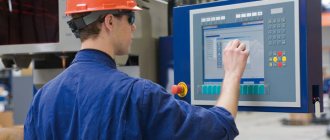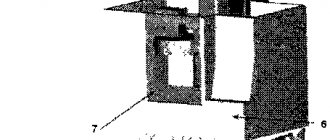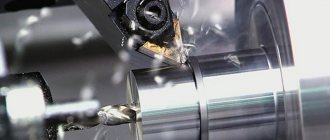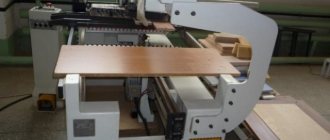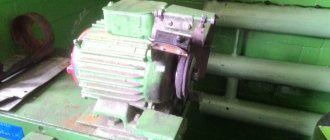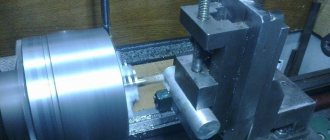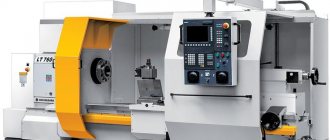Designed by pch-vector/Freepik
Numerically controlled machines are widely used in all areas of production from mechanical engineering to woodworking. For example, if you take any modern car, then more than half of the parts in it (gearboxes, cardan and crankshafts, etc.) will be turned on CNC milling and lathe machines. Metal processing is the most common area for this type of machine.
Modern CNC machines can carry out a complex processing cycle, spending half as much time and reducing production costs by an order of magnitude.
However, only highly qualified specialists who are well versed in electronics can operate such units.
Brief description of the machines
CNC machines operate from a control computer. It forces the device to perform certain functions that are prescribed in the program code. With the help of such a system, all kinds of operations on processing materials (mainly metals) are carried out automatically. CNC can be installed on turning, bending, milling, drilling and other equipment. Before the invention of computer numerical control, almost all machine work was done by hand.
A CNC machine can have turning cutters, cutters, drills, pressing molds and even a laser in its arsenal. Using them, you can make the most precise and complex parts: from car engines to spare parts for rockets. Such units are controlled by an adjuster and operator of computer-controlled machines.
The profession is named according to the machine at which the master works. If his specialty is bending machine, then the job title sounds like CNC bending machine operator. Turning is carried out by a person with the profession of “CNC lathe operator”.
How to transfer with CNC?
CNC can mean: ... Numerical control is a computerized control system that controls the drives of process equipment. Human-readable URLs are web addresses that are easy for users to understand.
Interesting materials:
How to remove pen stains from colored fabric? How to remove grass stains from colored clothes? How to remove wax stains on jeans? How to remove wax stains from suede shoes? How to remove green stain from wallpaper? How to remove a stain from white fabric using peroxide? How to remove a stain from a sofa? How to remove sunflower oil from a jacket? How to remove a pen from dermantine? How to remove a pen from wallpaper without leaving marks?
Operator Responsibilities
The responsibilities of a CNC operator typically include:
- setting up and servicing equipment (entering a program, installing and removing tools and workpieces);
- control of the processing process;
- checking finished parts;
- Troubleshooting minor problems, adjusting main components and mechanisms.
The specific type of occupation is determined according to the category. All employees are required to keep the workplace clean and tidy. In addition, the operator is engaged in turning tools.
The operator's manual is the Job description of the operator of computer-controlled machines. This instruction is compiled for each specific enterprise. There is also a standard professional profile that describes the norms and requirements for a given profession.
How many machines can one person operate? An experienced CNC operator usually operates several machines at the same time, depending on the complexity of the job. For example, two lathes, cutting relatively simple products from soft materials, and one milling machine, with a more difficult task. The main thing is to be able to carefully plan your actions so that the machines do not stand idle.
Position of the adjuster, his responsibilities
A CNC operator is considered a separate position, but, as a rule, operators are also adjusters. Of course, people with multiple specialties are valued more and receive higher salaries. The responsibilities of a CNC adjuster include the development of control programs (CP) for the manufacture of parts with certain characteristics and, in fact, adjustment.
Important! Before applying for a vacancy, a person must definitely study the job description so that no questions arise later.
Programming
At the beginning, the CNC machine tool operator or operator reviews the drawings and establishes the sequence of instructions that the machine will need to carry out. Using them, the adjuster makes NC in a numerical code.
What are the categories?
Access to the machine begins from the second category, which is the responsibility of specialists:
- Specialists of the second category process parts with a simple design, usually 12 - 14 qualifications, special equipment is configured to perform the same type of processing. As soon as specialists complete the second category, they can move on to designing bushings and screws. Responsibilities include drilling holes (through and blind types) with a diameter of no more than 24 millimeters. Large or medium sized parts are produced from extruded profile blanks.
- For specialists of the third category, responsibilities are provided for the manufacture of parts of medium and high levels of complexity. Metal parts according to 8 – 11 qualifications. In this case, the machine is already configured to produce several types of parts, which will require three or more processing tools. Employees may be assigned to turn external contours, order milling work, or thread cutting. Holes larger than 24 millimeters in diameter are allowed. May require processing using a rotary lathe.
- Employees of the fourth category receive an increased level of complexity in the production of parts for 7 – 10 qualifications. This specialist has enough experience and knowledge to operate several machines. Perhaps he will be entrusted with the maintenance of a multi-purpose machine, as well as the robotization of equipment. A specialist of the fourth category receives turning work and finally processes parts that are quite complex in their geometric structure. Engaged in the processing of large parts (turbine and compressor housings, belts, beams, wing tips, and so on).
- Specialists with the highest category - fifth, carry out work at 6 - 7 qualifications on machines specially configured for the production of complex parts. On such machines, periodic rearrangement or installation of fastening systems is necessary.
The work is complex and requires a clear mind, so specialists need constant confirmation of their qualifications, and advanced training courses are regularly opened for specialists. According to the rules, a specialist must receive each rank in turn, each new rank obtained gradually. Even if a specialist of the second rank performed work available only at the fourth rank, in order to receive the appropriate rank, he must first receive the third.
But it is also worth answering that if a master does not pass the qualification during advanced training courses, the old one is not taken away from him, after some time he can try again.
Working environment and safety rules
This profession has its pros and cons. Most modern machines are partially or completely enclosed, minimizing workers' exposure to noise, debris and grease. Machinists who operate CNC machines report fewer injuries than most other occupations.
However, working on machines can be noisy and present certain dangers. All beginners need to understand how important it is to follow safety rules. For example, you should be careful around moving machinery and wear safety glasses and earplugs while working.
Personal qualities of the profession as an adjuster of machine tools and manipulators with program control
Servicing machines and manipulators requires not only the presence of specific skills, but also character traits. Thus, the technician must love working with technology, think outside the box, have a good memory and not be afraid of experimental approaches to solving problems.
In addition, the following qualities are required:
- responsibility;
- diligence;
- accuracy;
- observation.
Specialty training
You can master a specialty for working on a numerically controlled machine if you undergo training in “Mechanical Engineering Technology” at a technical school or in courses. Both men and women can become operators. The qualification has 5 categories. Rank increases as you gain experience.
For example, a 2nd grade CNC lathe operator can only make simple parts, but after being assigned 3rd and 4th grades, he is already entrusted with more complex tasks, with a large number of fixtures and number of transitions. With the assignment of the 5th category, the machine operator is able to perform processing, during which it is necessary to perform combined fastening and reinstall the manufactured product.
Keepwork (Southern Administrative District)
Address : metro station Nagornaya, Elektrolitny proezd, 3, building 2. Website : https://keepwork.pro/ Phone : + Cost : from 25,000 rub. per course
CNC and modeling courses
During the course you will learn how to independently make the parts you need, from modeling to manufacturing. The course will also provide you with an understanding of what CNC machines you need and how to choose them.
Course program
The training takes place in the format of individual lessons and includes 3 blocks:
I. 3D modeling in the Compass program
- General introduction to the program
- Learning to make parts and assembly
- Saving parts and drawings
II. Preparation of control programs in ArtСam
- General acquaintance with ArtCam
- Working with vectors and layers: error correction, transformation, reproduction
- Writing control programs and testing them
III. Implementation of written programs on a 3-axis CNC milling machine
- CNC machine design, main components - how they can be implemented, what to look for when purchasing
- Preparing and starting the machine
- Basic manipulations during the operation of the machine.
Necessary knowledge and skills to obtain qualifications
To perform the duties of an operator efficiently, a person must know and understand:
- structure and technical characteristics of machines (milling, turning, rotary, drilling, boring, bending);
- parts processing technology;
- properties of processed materials;
- CNC programming options;
- principles of working with technical specifications and setup map;
- signs of malfunction;
- rules for the use of measuring and cutting tools, as well as devices.
The specialty “operator of computer-controlled machines” requires knowledge of mechanical engineering, drawing, CAD, mathematics, mechanics, and electrical engineering. Also, the profession of a CNC machine operator implies the presence of the following personal qualities and skills:
- attention to detail;
- analytical thinking;
- accuracy and clear coordination of movements;
- good vision and hearing;
- ability to respond quickly in the event of an emergency.
Note: the skills listed are taken from the occupational chart for CNC operators.
The CNC operator needs to be serious and always act in accordance with the job description. The employee must know the equipment and safety rules (including fire and sanitary), as well as the requirements for finished products. Of course, mastering a profession will take time and practice, because no one becomes a specialist right away!
Ensi-Tech (SVAO)
Address : m. Savelovskaya, st. B. Novodmitrovskaya, 14/2, 213 Website : https://nc-tech.ru Phone Cost : from 20900 rub. per course
If desired, training can be conducted at the company’s site or at the customer’s site. The company's office has specialized bench equipment for training.
The program was specifically designed for maintenance specialists and engineering personnel. It includes consideration of all issues related to preventing downtime of control systems.
The form of training seminars is group or individual lesson.
After successfully completing the course, participants are issued a MITSUBISHI ELECTRIC CERTIFICATE, which identifies the topics of the seminar and the skills acquired upon completion.
